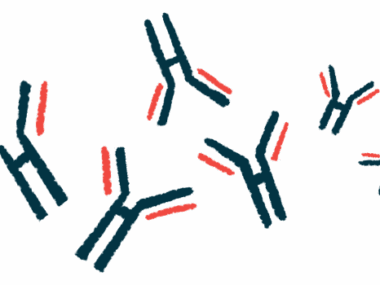Lesion resolution may distinguish NMOSD, MOGAD, MS in children
Brain, spinal cord lesions resolved more often with MOGAD than other 2 diseases
Written by |

Brain and spinal cord lesions resolve less often in children with neuromyelitis optica spectrum disorder (NMOSD) than with myelin oligodendrocyte glycoprotein antibody disease (MOGAD), a related disorder, according to a small study.
No significant differences in resolving lesions were seen between children with NMOSD and those with multiple sclerosis (MS), another autoimmune disease that affects the central nervous system (CNS), or the brain and spinal cord.
These findings are similar to what was previously reported for adults with these diseases, with lesion resolution being more frequent among those with MOGAD. This suggests the differences are related to specific disease mechanisms rather than age.
“This reaffirms the clinical utility of MRI [lesion] evolution to differentiate between MOGAD, [NMOSD with anti-AQP4 antibodies], and MS,” the researchers wrote in “Comparison of MRI T2-lesion evolution in pediatric MOGAD, NMOSD, and MS,” which was published in the Multiple Sclerosis Journal.
NMOSD occurs when the immune system mistakenly produces self-reactive antibodies that attack healthy nervous system cells. In most cases, these antibodies target AQP4, a protein in nerve cell-supporting cells called astrocytes.
These autoimmune attacks lead to inflammation of the spinal cord and optic nerve, which connects the brain to the eye. The result is a significant loss of myelin, the protective sheath that surrounds nerve fibers, leading to disruptions in nerve cell function.
These lesions can be visualized in MRI scans.
Other autoimmune diseases with CNS demyelinating lesions, or lesions with myelin loss, include MOGAD and MS. While all three have distinct underlying mechanisms, they share certain features, which can make a diagnosis challenging.
“Studying the temporal evolution of different demyelinating T2-lesions on MRI after an initial attack might improve understanding of their [underlying mechanisms], inform diagnosis, and help optimize strategies for disease monitoring and treatment,” the researchers wrote. Demyelinating T2-lesions are those showing myelin loss.
While demyelinating lesions were seen to resolve completely more often in adults with MOGAD than those with AQP4-related NMOSD or MS, researchers retrospectively analyzed the temporal evolution of demyelinating lesions after a single brain or spinal cord attack in children with MOGAD, AQP4-related NMOSD, or MS to see if this also happened in pediatric patients.
Studying lesions in children with NMOSD, MOGAD, MS
The study included 21 children with MOGAD, eight with NMOSD and anti-AQP4 antibodies, and 27 with MS at the Mayo Clinic College of Medicine, Rochester, Minnesota.
While there were no significant group differences regarding sex, the MOGAD patients were significantly younger at attack onset than the NMOSD or MS (median of 7 vs. 13.5-15 years) patients. Also, children with NMOSD had a higher median number of attacks (three vs. two) and worse disability than the other groups.
A total of 69 attacks, 37 in the brain and 32 in the spinal cord, were reported in these children. In 13 of them — six with MOGAD, three with NMOSD, and four with MS — both brain and spinal cord attacks were analyzed.
MRI scans were obtained within six weeks of the attack and more than six months after the first scan. An index T2-lesion, the largest or the one associated with the patient’s symptoms in each attack, was identified, and its resolution or persistence on follow-up was determined.
All the children with NMOSD or MOGAD, and 74% of those with MS, received immunotherapy, most commonly corticosteroids, within six weeks of the attack.
The complete resolution of the index T2-lesion was more frequent with MOGAD than the other two groups.
Specifically, 60-67% of index T-2 lesions in the MOGAD group were resolved after at least six months, while only 25% of brain lesions and no spinal cord lesion were resolved in children with NMOSD. Children with MS saw no brain lesions resolved and only 8% in the spinal cord.
Reductions in the median lesion area at follow-up were significantly greater in MOGAD than in MS, either in the brain (305 vs. 42 mm) or the spinal cord (23 vs. 10 mm).
Children with NMOSD showed reduction levels between the two groups — 133 mm in the brain and 19.5 mm in the spinal cord —which were not significantly different.
The complete resolution of all T2-lesions at MRI follow-up occurred more often with MOGAD attacks that affected the brain (40% vs. 25% in NMOSD; 0% in MS) or spinal cord (58% vs. 0% in NMOSD; 8% in MS).
In other words, in children with NMOSD, a quarter of the brain lesions resolved, while all those in the spinal cord persisted.
“Our study provides additional insight into the [mechanisms] of these diseases in children and shows that most T2-lesions in pediatric MOGAD resolve, while in MS most persist,” the researchers wrote. “The reasons for T2-lesion resolution are uncertain but may suggest more efficient remyelination [myelin repair] in MOGAD.”






